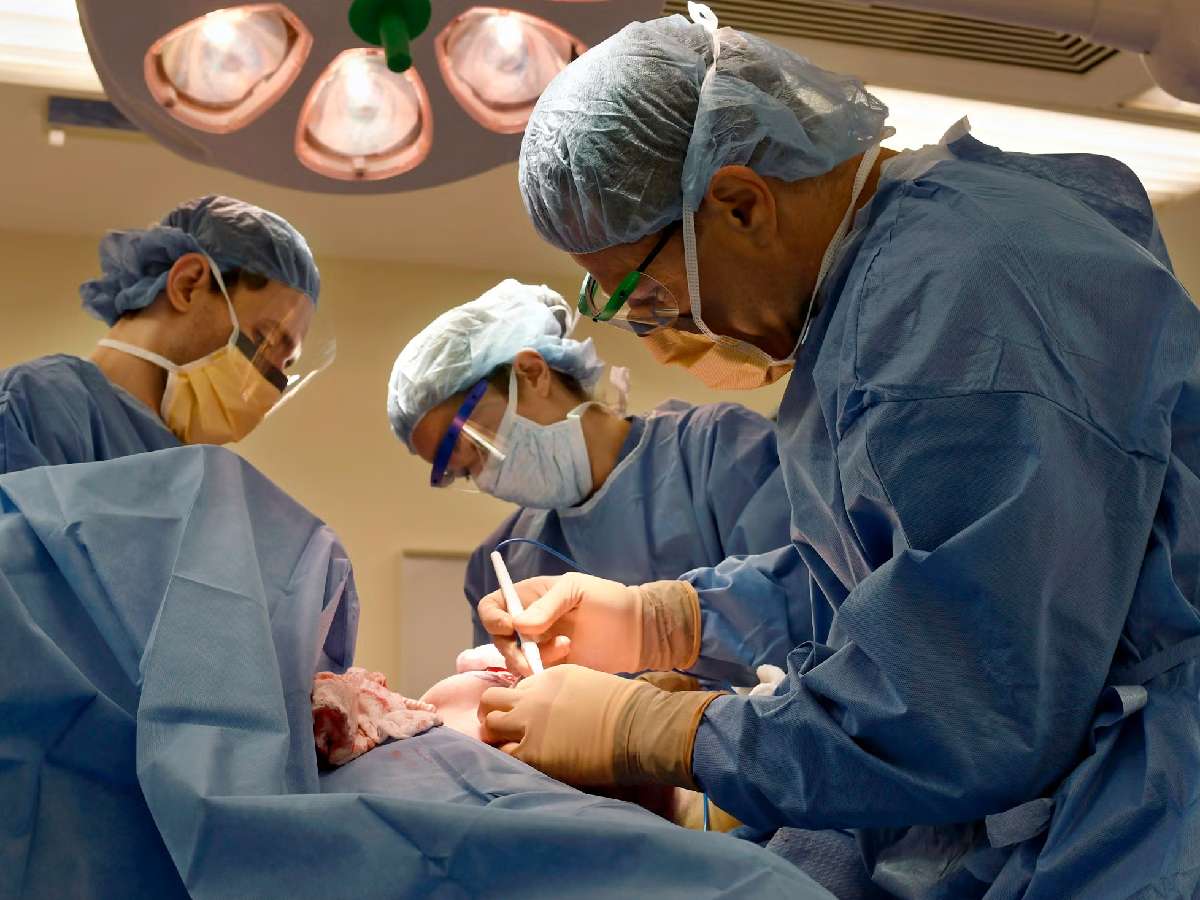Pride Month: As India progresses in its approach to gender rights and inclusivity, one aspect of healthcare garnering increasing attention is gender affirmation surgery—a critical component in the transitioning journey for many transgender individuals. While legal recognition and social visibility are gradually improving, there remains an urgent need to highlight the medical, psychological, and social dimensions of this transformative process.
To demystify the realities of gender affirmation surgery, Patriot spoke with Dr Swaroop Singh Gambhir, Senior Consultant Plastic Surgeon at Sir Ganga Ram Hospital, who has years of experience performing gender-affirming procedures. In this in-depth conversation, Dr Gambhir shares insights on everything from surgical steps and timelines to costs, stigma, and the evolving role of technology.
What exactly is gender affirmation surgery?
Gender affirmation surgery—previously known as sex reassignment surgery—refers to a set of medical procedures that help individuals align their physical sexual characteristics with their gender identity.
“These are not cosmetic surgeries; they are medically necessary for people experiencing gender dysphoria—a psychological condition where there is a disconnect between one’s assigned sex at birth and their true gender identity,” says Dr Gambhir.
He explains that gender dysphoria is congenital. “It’s not a disease, nor something one ‘catches’. Individuals who opt for gender affirmation are often psychologically female but born physically male—or vice versa. The surgery helps resolve this mismatch, allowing them to lead more fulfilled lives.”
Also read: Seeing the self: Transgender persons in Delhi find hope in surgery, but hurdles remain
What does a gender transition journey typically involve in India?
According to Dr Gambhir, the process is highly structured and guided by internationally accepted medical protocols, such as those set by the World Professional Association for Transgender Health (WPATH).
“The first and foremost step is psychiatric evaluation,” he explains. A qualified psychiatrist assesses whether the individual is experiencing persistent gender dysphoria. “Ideally, this evaluation should last for one to two years, although six months of documented counselling is the minimum requirement before medical interventions can begin.”
Once psychological clearance is received, the individual may begin hormone replacement therapy (HRT) under the supervision of an endocrinologist. This step involves administering hormones such as oestrogen or testosterone to develop secondary sexual characteristics aligned with the individual’s gender identity.
“Only after consistent monitoring and affirmation of the individual’s readiness do we proceed with surgical options,” he says. “Transition is not something that happens overnight—it’s gradual and deeply personal.”
What surgeries are typically involved in gender affirmation?
Surgical procedures vary depending on whether the transition is male-to-female (MTF) or female-to-male (FTM).
For MTF transitions, common procedures include:
- Breast augmentation
- Facial feminisation surgery (such as hairline lowering and rhinoplasty)
- Vaginoplasty (creation of a neovagina)
For FTM transitions, procedures may involve:
- Mastectomy (removal of breast tissue)
- Hysterectomy (removal of uterus and ovaries)
- Phalloplasty or metoidioplasty (construction of a penis using grafts)
- Facial masculinisation surgery
“In both cases, facial surgeries are elective but can be important for personal and social confidence,” Dr Gambhir notes. “Genital reconstruction is the most complex part and is often done in stages.”
What role does hormone therapy play?
HRT is essential both before and after surgery. “It helps align secondary sex characteristics—like voice, skin texture, and body hair—with the affirmed gender,” says Dr Gambhir.
“For instance, testosterone helps develop facial hair and a deeper voice for trans men, while oestrogen softens skin and redistributes body fat in trans women.”
He adds that HRT is usually a lifelong commitment, particularly for those who have undergone gonad removal surgeries, which stop the body’s natural hormone production.
What is the legal age of consent?
In India, the legal age for consenting to gender affirmation surgery is 18 and above. “Parental consent is not legally required for adults, but it is recommended, especially in family-inclusive transitions,” says Dr Gambhir. “Emotional and financial support from families plays a huge role in better outcomes.”
Is surgery the only option?
“Not at all,” Dr Gambhir clarifies. “Transitioning is a spectrum. Some individuals find solace in social or hormonal transitions alone and may never opt for surgery. Surgery is pursued when there’s a strong, consistent need for physical transformation to reduce gender dysphoria.”
He emphasises the indispensable role of mental health professionals—both for evaluating readiness and providing post-surgical counselling.
How long does a complete transition take?
According to Dr Gambhir, a full physical transition, including hormone therapy and all surgical stages, typically takes between two to three years.
“This is not a single-procedure transformation,” he explains. “It’s a staged process that allows the body and mind to adjust over time. After this period, most individuals can live fulfilling, affirmed lives.”
What kind of care is required before and after surgery?
Pre-surgery, individuals must undergo a basic medical fitness check. “There’s no need for specialised pre-op care beyond that, assuming all health parameters are in place,” Dr Gambhir says.
Post-operative care involves routine wound management and lifelong hormone therapy. “Hormone therapy post-surgery is not optional; it’s essential to maintain secondary sexual characteristics and overall health.”
While follow-ups with the plastic surgeon and endocrinologist are encouraged, they are ultimately patient-driven. “Some patients continue with us for years; others consult local physicians. It depends on the individual’s preference and comfort.”
Also read: Menstrual Hygiene Day | We must normalise menstruation, not hide it: AIIMS gynaecologist
What are the costs and support options?
Costs vary significantly by facility. “In small or charitable centres, costs may be low. But in corporate hospitals, the total can go up to Rs 7–8 lakh or more,” says Dr Gambhir.
A staged FTM surgery may break down as follows:
Stage 1: Rs 1.5 lakh (mastectomy)
Stage 2: Rs 3 lakh (hysterectomy)
Stage 3: Rs 5 lakh (phalloplasty)
Additional procedures such as implants or aesthetic surgeries can increase the total.
Some state governments have started providing support. “Rajasthan has introduced a state-level scheme that covers or subsidises gender affirmation surgery, although I don’t recall the exact name. It’s a very positive step.”
Government hospitals offer these surgeries at little or no cost. “The government sector is a lifeline for many patients who cannot afford private care,” he adds.
How accessible are these surgeries?
“They’re far more common now than even five years ago,” says Dr Gambhir. “We get a steady stream of patients from across India—urban and rural, rich and poor. The stigma is slowly diminishing.”
Family acceptance is also improving. “Some parents even accompany their children throughout the transition process. Of course, resistance still exists, but public understanding has improved.”
Do people still go abroad for surgery?
“In some cases, yes,” he says. “Countries like Thailand and Singapore offer gender affirmation surgeries with minimal social scrutiny and high technical expertise. But today, many patients are choosing to stay back and undergo surgery in India, which is encouraging.”
For those facing family or community rejection, peer support becomes crucial. “There are several active communities—both online and offline—where transgender individuals find support and solidarity. These platforms create a safe space, which is essential for emotional well-being.”
How is technology changing the field?
“Surgical technology has improved a lot in terms of tools and techniques,” says Dr Gambhir. “We’re able to achieve better cosmetic and functional outcomes with new instruments and suturing materials.”
However, the nature of the procedures remains largely the same. “As of now, AI is not directly involved in gender affirmation surgery. It’s more useful in diagnostic fields like radiology or dermatology. In surgery, AI’s contribution is still emerging—perhaps in robot-assisted surgeries in the future.”
Final thoughts
“The journey of transitioning is not just physical—it’s emotional, psychological, and social,” says Dr Gambhir. “As surgeons, we are just one part of the puzzle. We need collaboration with psychiatrists, endocrinologists, and most importantly, society.”
He calls on the media and institutions to play a more active role in breaking stereotypes and promoting acceptance. “Visibility and respectful conversations can go a long way in ensuring that transgender individuals receive not just medical care, but dignity.”





